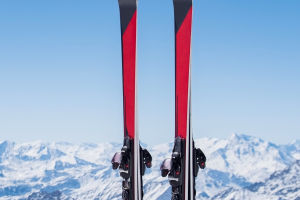Freestyle ski jumping is a visually stunning and exciting sport that combines alpine skiing with acrobatics. Athletes must have good balance and control in the air to excel in this intense and dangerous activity.
In the 1960s, the Waterville Valley Ski Resort in New Hampshire hosted the first freestyle skiing competition, which marked the birth of the sport. Over the years, it has evolved to include elements of gymnastics, diving, and skiing.
In 1975, the World Cup Freeride competition began and in 1979, the International Ski Federation officially recognized freestyle skiing as a sport.
To excel in freestyle skiing, athletes must master three skills: aerials, dancing, and skiing. The high risk of competition has led to new rules and regulations to ensure the safety of the athletes.
As a result, freestyle skiing has grown in popularity and is now practiced by 28 of the 53 FIS member countries.
In freestyle ski competitions, athletes perform a variety of thrilling stunts on steep and rugged snow slopes, such as back jumps, kicks, and even heels. The rules of the competition are based on an obstacle course and a snow skills course, where athletes must perform two jumps without making technical mistakes or losing their balance.
Points are awarded based on technique, speed, and aerial skills, with the athlete who scores the most points being ranked first.
Freestyle skiing is not just about the spectacular flying jump, but also the countless unseen efforts that go into it. To excel in this sport, athletes must have good balance and control in the air and avoid making mistakes from the start.
In addition to the traditional freestyle ski events, there are also newer disciplines that have gained popularity in recent years.
These include ski cross, where skiers race against each other on a course with jumps, rollers, and other obstacles, and halfpipe skiing, where skiers perform tricks and stunts while going up and down a halfpipe-shaped course.
Another important aspect of freestyle skiing is the equipment. Skiers typically use specialized skis that are wider and shorter than traditional alpine skis, which allows them more freedom of movement and control in the air.
They also use specialized boots and bindings that allow them to release their skis in case of a fall.
Freestyle skiing is a dynamic and exciting sport that requires a high level of skill, athleticism, and courage. The combination of skiing and acrobatics, along with the thrill of performing stunts on snow, makes it an adrenaline-pumping experience for both athletes and spectators alike.
In terms of competitions, the FIS Freestyle World Ski Championships are held every two years, and the Winter X Games, which is a winter version of the X Games, also feature freestyle skiing events. Freestyle skiing is also included in the Winter Olympic Games.
Overall, freestyle skiing is a challenging and exciting sport that requires a combination of skill, athleticism, and courage. With the constant evolution of the sport, it is likely to continue to grow in popularity and attract more and more fans in the future.


